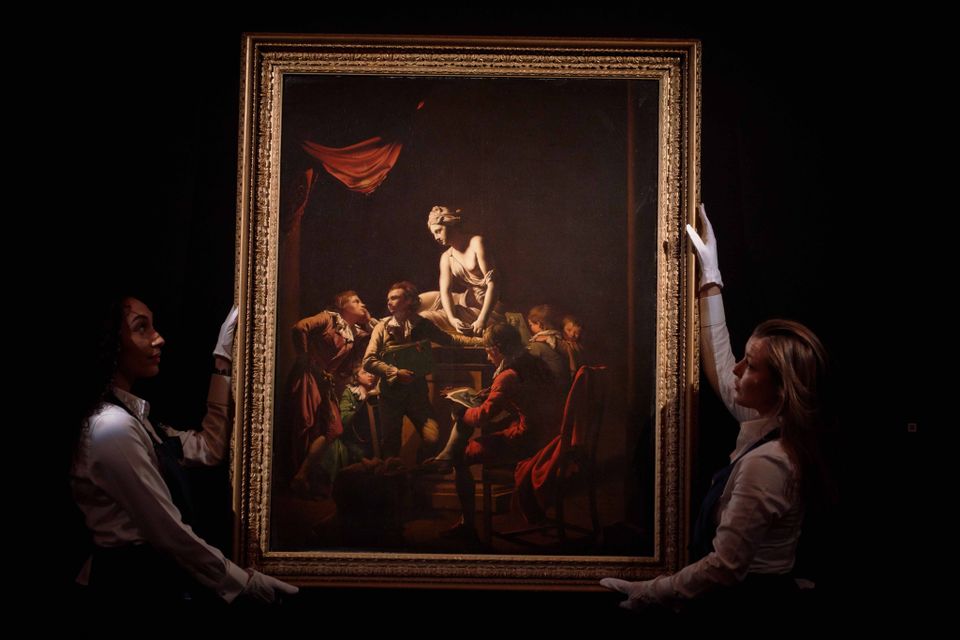Poor Rembrandt. Of all the greats, he is perhaps the artist most concerned with truth—but also the artist whose works have been most hopelessly muddled by art historians.
Lot 10 in Christie’s Old Masters Evening Sale on 7 December was a case in point: a perfectly respectable portrait of Petronella Buys, traceable within her lifetime to the collection of her brother-in-law, and undoubted as a genuine Rembrandt for centuries. Rembrandt also painted, as a pendant, Petronella’s husband Philips Lucasz, whose portrait is now in the National Gallery, where it is regarded as a benchmark Rembrandt of the mid-1630s. Then, in 1989, the Rembrandt Research Project (RRP) declared that while Philips was largely by Rembrandt himself, Petronella seemed “to be entirely painted by an assistant”.
Notwithstanding the sheer oddness of this conclusion (why would Rembrandt paint only one-half of a commissioned pair, and who was this gifted mystery assistant?), the RRP spoke with Olympian authority, and thereafter Petronella’s status (and, of course, value) were seriously in doubt. Happily, the early opinions of the RRP are now regularly revisited, and Christie’s justly included Petronella in its sale, fully catalogued as a Rembrandt. She carried an inevitably cautious estimate of around £1.5m-£2.5m but sold for £3.4m (with fees). As Rembrandts go, that’s a bargain.
Sotheby’s top of the lot at its Old Masters Evening Sale on 6 December was An Academy by Lamplight, by Joseph Wright of Derby, which made £7.3m (with fees) – more than double the high estimate of around £2.5m-£3.5m. Probably 30 years ago, this picture might have been deemed too academic for a market still keenly buying anything “sporting”. But nowadays, with its accessibly modern lighting – in this, as in much else, Wright was ahead of his time – it will hang as comfortably in a New York apartment as any museum. The fact that it was in almost miraculously good condition helped it achieve a new auction record for Wright.
Another Sotheby’s success was a newly discovered John Constable, The Opening of Waterloo Bridge (Whitehall Stairs, June 18th 1817). Despite belonging to the noted French collector Camille Groult, this picture had never been seen by Constable scholars. Constable, although supremely confident when it came to handling paint, was a cautious creator of compositions, and this picture was one of at least four sketches for a larger picture now in the Tate. It made £2.3m against an estimate of around £1m-£1.5m. The strong price can be compared with another rehabilitated Constable at Sotheby’s, an earlier and visually less exciting (and less modern) view of Dedham Vale with the River Stour in Flood (around 1814-17). Thiscarried a higher estimate of around £2m-£3m but was bought with a significantly lowered reserve, making £1.8m (with fees).
Both evening auctions were a success for Sotheby’s and Christie’s. The former totalled £25m; the latter £21.7m (both including fees). Such figures are a world away from the $450.3m made by Leonardo’s Salvator Mundi
The final discovery of the week was made by Bonhams—an exquisite Crucifixion by Lorenzo Veneziano, perhaps the most inventive artist at work in Venice in the 14th century. Painted in the 1360s, this moving picture achieves what so many gold ground paintings fail to do, and combines eye-catching luminosity with genuine emotion. The estimate in Bonhams’ sale on 6 December was temptingly low, at £400,000-£600,000, and the picture made £1.7m (with fees).








